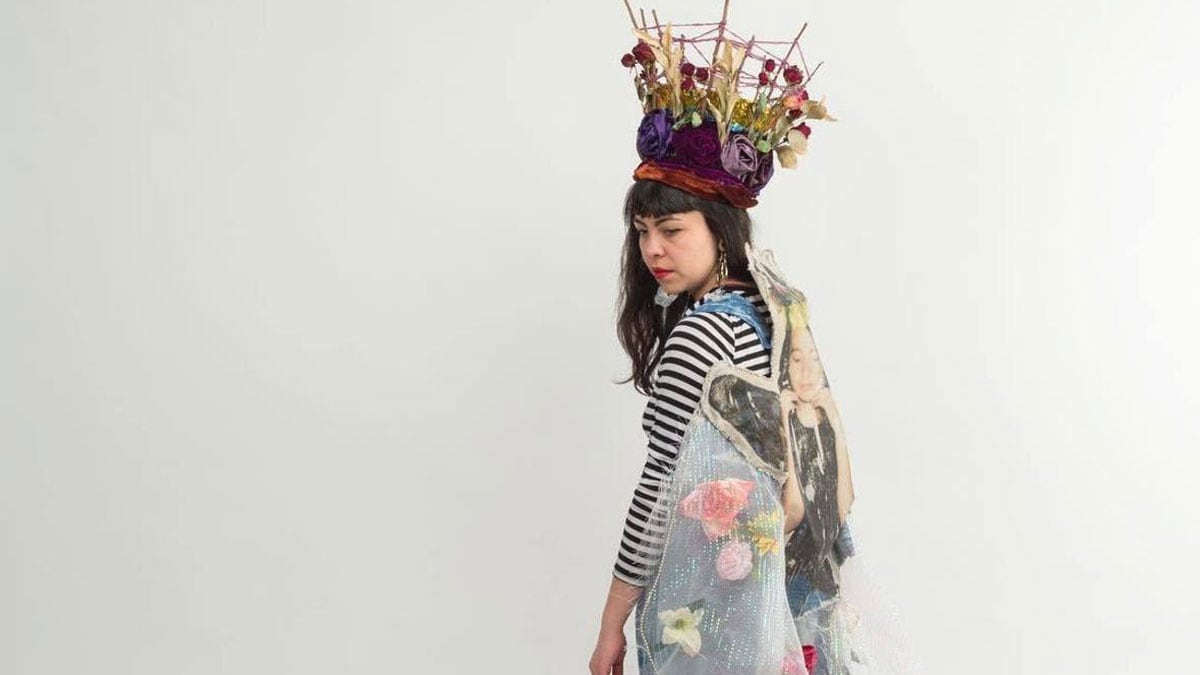Art school works exist in a strange purgatory. On one hand, students have the luxury of creating art that doesn't need to be for sale in a gallery in order to be displayed. But going to school for art also means spending a lot of time around other artists, which can lead to work that's more concerned with esoteric concepts than visceral effect.
PNCA's display of MFA projects is a three-part exhibit divided into visual studies, print media and collaborative design. There's a lot crammed into one show. Most of those works are multimedia installations that ask for a lot of mental energy.
Angélica Maria Millán Lazon's Engendradxs, in particular, has a lot to say. The installation, which already showed at Williamson | Knight gallery last April, displays luscious velvet capes with crowned portraits of the artist's aunt and grandmother on their backs. It's opulent but inviting: Scraps of purple fabric draped through the center of the installation look like a train of flowers. There are six smartphones mounted on the wall playing videos of the project's different components. In one, the artist wears a cape while leading a group of people through the streets of Portland chanting "Emancipated queens."
Savanna Youngquist's Being Half and Whole creates a deceivingly placid scene. Folded papers designed to look like envelopes addressed to "The Visitor" explain that it's about the artist's relationships with her boyfriend and twin sister. But even without that information, you can sense that it's telling a silently fraught love story. The installation almost blends into the gallery's blank walls: Two white pillows hang on the wall, one with a head-sized imprint that crumples the plush surface like a crater. Two facing mirrors reflect phrases in white script onto each other. "We don't hug" is written on one, "Because hugging you would be like hugging myself" on the other.
Most of the works aren't exactly confrontational, but they're rarely serene. Jenna Reineking's Reconstructing Deconstructed Constructs exacerbates fears of domesticity as much as a Bikini Kill song. It seems sardonically stale: Brown carpet covers the tops of stacked wood pallets. Among the objects standing on those platforms are a dustpan and broom coated in a clumpy film that makes you feel like your mouth is full of mothballs.
With all its detailed scenes, the exhibit can feel overwhelming. So Aruni Dharmakirthi's Fissures of the In-Between initially feels like a refuge from the chaos. Tattered sari fabric that hangs from the ceiling creates an intimate passageway. Projected on the opposite wall is a triptych of colorful animations. It's beautiful until you realize how unsettling it is: The vibrant patterns and abstract shapes are mixed with grainy, uncanny valley graphics and cartoonish drawings of men whose smiling, disembodied heads bob up and down above their bodies.
In a way, the tendency of art school works to try to make us feel uncomfortable is deeply idealistic. Perhaps more than any other corner of the art world, these artists ask for all they can from their viewers—and from art itself.
SEE IT: PNCA's MFA exhibits are at the Falcon Building, 321 NW Glisan St., pnca.edu. Through June 16. Free.
